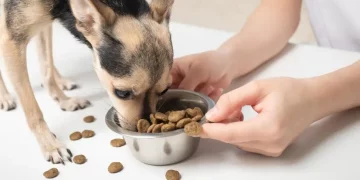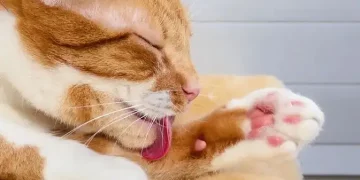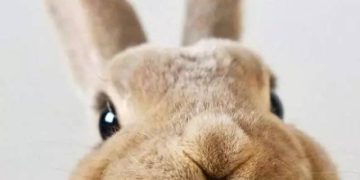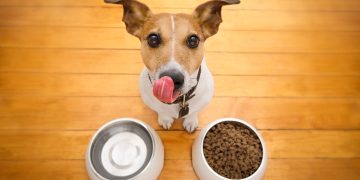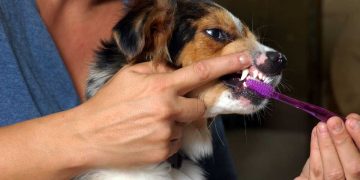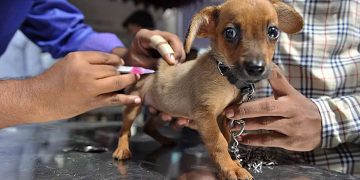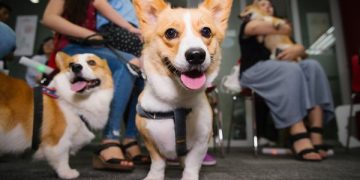Obesity is a growing concern among pets worldwide, affecting both dogs and cats in alarming numbers. Pet obesity can lead to a range of serious health issues, including diabetes, joint problems, heart disease, and a shortened lifespan. Just like in humans, preventing obesity in pets starts with proper feeding practices. Understanding portion control, the nutritional content of pet foods, and making informed choices about low-calorie options can help maintain a healthy weight for your pet. This article will provide practical guidelines for preventing obesity in pets, offering advice on portion control, choosing the right foods, and fostering healthy habits.
The Growing Problem of Pet Obesity
Obesity is one of the most common preventable health issues in pets today. According to various studies, more than 50% of dogs and cats in the United States are considered overweight or obese. The increase in pet obesity is largely due to a combination of overfeeding, lack of exercise, and the availability of high-calorie, processed pet foods.
Obesity doesn’t just affect a pet’s appearance—it can have significant health consequences. Overweight pets are at higher risk for developing conditions such as:
- Diabetes: Obesity increases the likelihood of insulin resistance, leading to diabetes.
- Joint Problems: Excess weight puts additional strain on joints, contributing to arthritis and other musculoskeletal issues.
- Heart Disease: Overweight pets are more likely to suffer from cardiovascular disease.
- Shortened Lifespan: Studies show that pets with a healthy weight tend to live longer, with some research suggesting an increase in life expectancy of 1-2 years for pets maintained at a healthy weight.
To prevent these health problems, it’s essential to establish good feeding practices, control portions, and provide appropriate nutrition that supports your pet’s well-being.
The Role of Proper Feeding in Obesity Prevention
Preventing obesity starts with understanding your pet’s nutritional needs and being mindful of the food you provide. Proper feeding involves more than just offering a bowl of food—it’s about providing the right balance of nutrients, controlling portion sizes, and maintaining consistency. Here’s how you can address the feeding practices that will help prevent obesity:
1. Portion Control: How Much Should You Feed Your Pet?
Portion control is one of the most important aspects of managing your pet’s weight. Overfeeding, even with healthy food, can lead to excess weight gain. The appropriate portion size depends on factors such as your pet’s age, breed, activity level, and metabolism.
- Consult with Your Veterinarian: Before adjusting your pet’s food portion, consult with a veterinarian to determine the right daily caloric intake. Your vet can calculate the ideal amount of food based on your pet’s ideal body weight, taking into account any specific health concerns.
- Follow Feeding Guidelines: Many pet food brands provide feeding guidelines on their packaging. These guidelines offer a starting point based on your pet’s weight and size, but they may need to be adjusted depending on your pet’s specific needs and lifestyle.
- Use a Measuring Cup or Scale: To avoid over- or under-feeding, always measure your pet’s food using a standard measuring cup or a kitchen scale. This ensures accuracy and helps you avoid giving your pet more than they need.
- Divide Meals into Smaller Portions: Instead of feeding your pet one large meal, divide their food into two or more smaller meals throughout the day. This can help prevent overeating and allow for better digestion.
2. Choose Low-Calorie, Nutrient-Dense Foods
When choosing pet food, it’s essential to select products that are not only low in calories but also high in essential nutrients. Some pet foods, particularly treats and low-quality brands, can be packed with empty calories that contribute to weight gain without providing the nutrition your pet needs.
- Look for High-Quality Protein: Protein is an important nutrient that helps maintain muscle mass and supports overall health. Look for foods that list high-quality sources of protein (like chicken, beef, or fish) as the first ingredient, and avoid foods with a lot of fillers like corn and soy.
- Choose Fiber-Rich Foods: Fiber helps pets feel full longer and can prevent overeating. Look for foods that contain natural fiber sources like pumpkin, sweet potatoes, or flaxseeds. Fiber also supports digestive health and can prevent constipation.
- Opt for Low-Calorie Pet Food: Many pet food brands offer weight management formulas that are lower in calories but still provide balanced nutrition. These foods are designed to help pets maintain a healthy weight without compromising on essential nutrients.
- Limit Carbohydrates: While some carbohydrates are necessary for energy, too many can contribute to weight gain. Choose foods with lower carbohydrate content and opt for ingredients like whole grains, vegetables, and fruits in moderation.
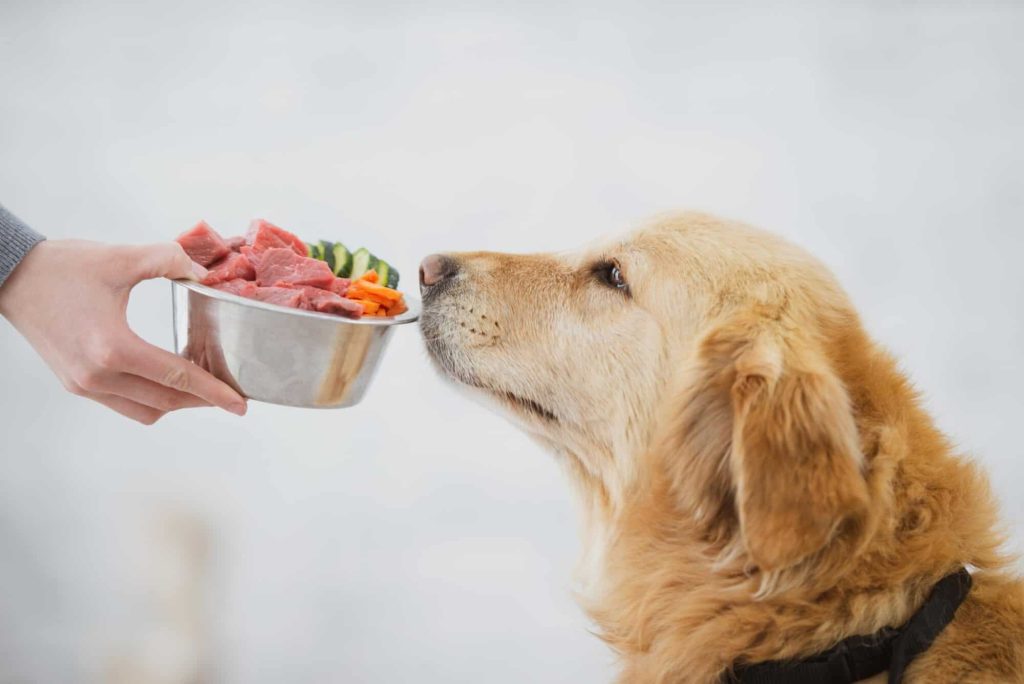
3. Minimize Treats and Human Food
Treats are an important part of pet care, as they can be used for training, bonding, or rewarding good behavior. However, they can also be a hidden source of excess calories that contribute to obesity.
- Use Treats Sparingly: Treats should never make up more than 10% of your pet’s daily caloric intake. If you give treats frequently, be sure to account for them in your pet’s overall food portions to avoid excess calorie consumption.
- Choose Healthy, Low-Calorie Treats: Opt for treats that are low in calories and high in nutritional value. Look for treats that are made with whole ingredients and are free from artificial additives and fillers. There are also treats specifically designed for weight management that are lower in calories.
- Avoid Human Food: Feeding pets human food is a common mistake that can lead to weight gain and nutritional imbalances. Many human foods are high in calories, fat, and sugar, which can quickly contribute to obesity. Stick to pet-safe treats and foods that are specifically formulated for their dietary needs.
- Healthy Chew Options: If your pet enjoys chewing, consider low-calorie chew toys or natural chews like rawhide or bully sticks. These can provide entertainment and satisfaction without adding unnecessary calories.
4. Incorporate Regular Exercise into Your Pet’s Routine
Exercise plays a crucial role in maintaining a healthy weight and preventing obesity in pets. Physical activity helps burn calories, build muscle mass, and improve metabolism, all of which contribute to a healthy weight.
- Daily Walks for Dogs: Dogs require daily exercise to stay fit and healthy. Depending on your dog’s breed, age, and energy level, aim for at least 30 minutes to an hour of exercise per day. This can be in the form of walks, playtime, or interactive games like fetch.
- Interactive Play for Cats: While cats may not require the same level of exercise as dogs, they still need regular physical activity to maintain a healthy weight. Use toys that encourage movement, such as laser pointers, feather wands, or treat-dispensing toys. Engaging in interactive play for 15-30 minutes daily can help keep your cat active.
- Monitor Activity Levels: Track your pet’s exercise routine and adjust it according to their energy levels. If you notice that your pet is gaining weight despite regular exercise, it may be time to reassess their food intake or the intensity of their exercise routine.
5. Hydration: Don’t Overlook Water Intake
Proper hydration is essential for overall health and weight management. Some pet owners may overlook the importance of ensuring that their pet has access to fresh water throughout the day, but dehydration can contribute to overeating and other health issues.
- Encourage Water Intake: Ensure that your pet always has access to clean, fresh water. If your pet seems reluctant to drink, try offering ice cubes or adding water to their food. Cats, in particular, may benefit from wet food that provides additional hydration.
- Monitor for Dehydration: Keep an eye on your pet’s water intake. If they suddenly begin drinking less than usual, it may be a sign of a medical issue such as kidney disease or urinary tract infections. Consult your veterinarian if you notice changes in your pet’s drinking habits.
6. Regular Monitoring and Adjustments
Obesity prevention requires ongoing attention and adjustments as your pet’s needs change over time. Regularly monitor your pet’s weight and body condition to ensure they are maintaining a healthy weight.
- Weigh Your Pet Regularly: Weigh your pet on a regular basis, ideally every 2-4 weeks, to track any changes in their weight. This will help you notice any trends toward weight gain or loss early, giving you the opportunity to adjust their food intake or exercise routine accordingly.
- Body Condition Scoring: In addition to weighing your pet, use a body condition score (BCS) chart to assess their body fat percentage. A BCS chart helps evaluate whether your pet is underweight, ideal weight, or overweight. Consult your veterinarian for guidance on how to interpret the BCS.
- Adjust Portions and Feeding Practices: As your pet ages or undergoes changes in activity levels, it may be necessary to adjust their food portions and feeding practices. Regular check-ups with your vet will help ensure that your pet’s diet and exercise plan remain appropriate for their evolving needs.
Conclusion
Preventing obesity in pets is essential for ensuring their long-term health and quality of life. By understanding the importance of portion control, choosing the right foods, limiting treats, and incorporating regular exercise, you can help your pet maintain a healthy weight and avoid the health complications associated with obesity. Remember, the key to successful obesity prevention is consistency and careful monitoring of your pet’s diet and lifestyle. With the right feeding practices, your pet can enjoy a long, happy, and healthy life.




